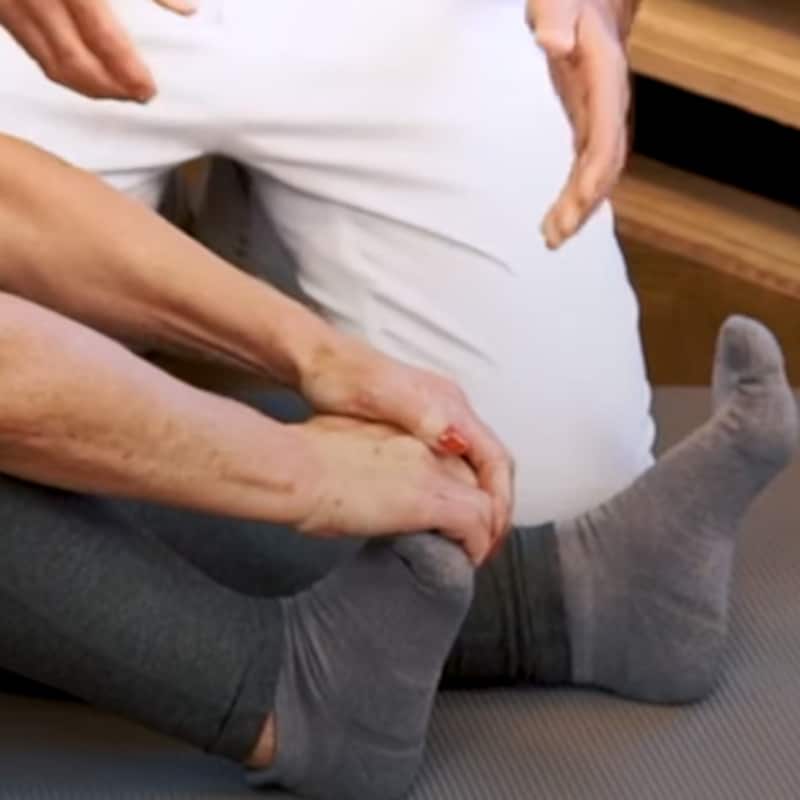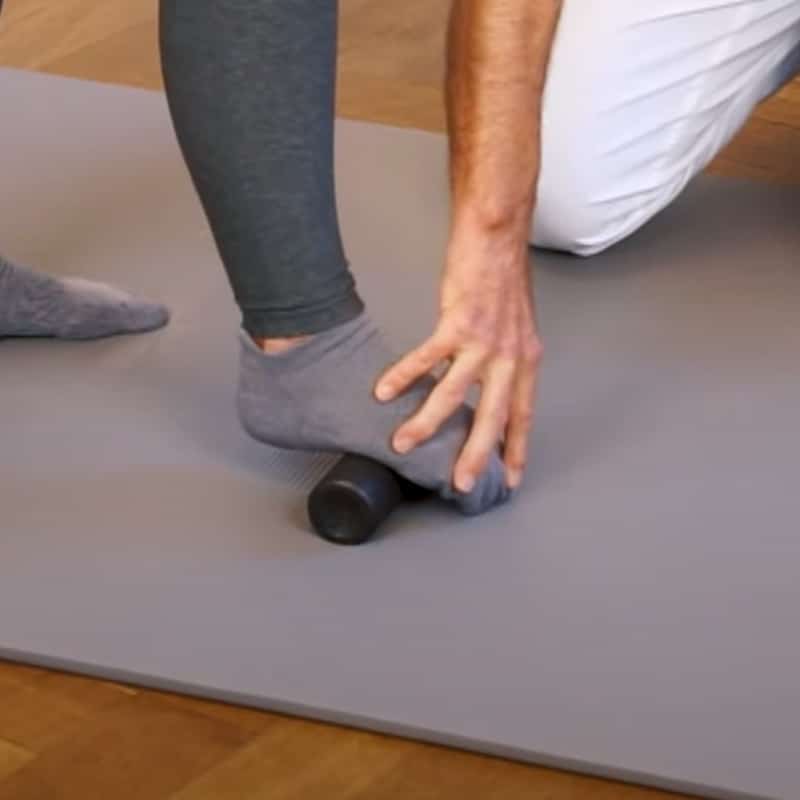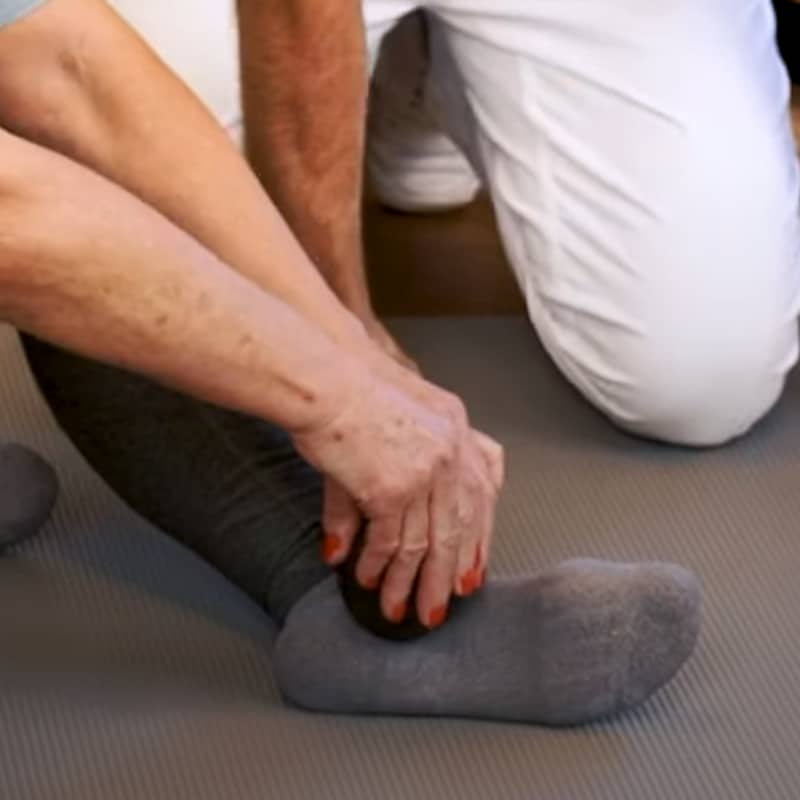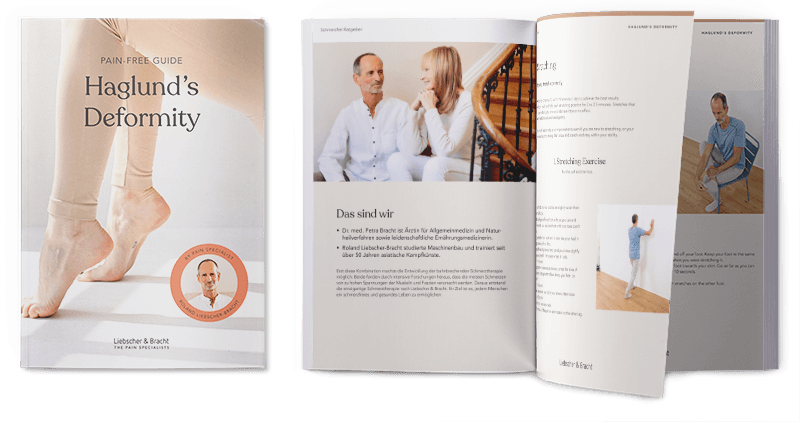Haglund’s Deformity Exercises
Body Part:
Foot
Equipment:
Mini Foam Roller & Mini Massage Ball
Level:
Beginner
Body Part:
Foot
Equipment:
Mini Foam Roller & Mini Massage Ball
Level:
Beginner
Haglund’s Deformity: The lump that launched a thousand limps. The bulge that gives you the walkin’ blues. The knot on the back of your heel that makes your favourite pair of shoes a bigger “not”! Our Haglund’s Deformity exercises can help. This 4-step routine takes just 10 minutes and, performed regularly, can help relieve Haglund’s Deformity heel pain and reduce swelling. All you need is our Mini Foam Roller and Massage Ball. If you don’t have our tools, you can use something similar, like a rolling pin and a tennis ball.
Visit our online shop to get your Mini Foam Roller and Mini Massage Ball. While you’re there, take a look around. We’ve got lots of pain-relieving tools and products waiting to be added to your cart.
Take me to the shop.The term Haglund’s Deformity describes a bony protrusion that can appear on the back of your heel at the point where your Achilles tendon is attached. The condition is also called retrocalcaneal exostosis, Mulholland deformity, and ‘pump bump.”1) Haglund’s Deformity can strike anyone and has no apparent cause. You may be more prone to Haglund’s Deformity if you have high arches in your feet, an abnormally tight Achilles tendon (which connects your calf muscle to your heel bone), or you walk on the outside edges of your feet. Often, footwear is culpable of causing Haglund’s Deformity. Wearing shoes that have a hard back, are too tight or stiff, or have a high heel may bring about the painful bony bump.
The most obvious sign of Haglund’s Deformity is a protrusion on the back of your heel. Additional symptoms include heel pain, redness or swelling of the affected area, calluses and blisters, and pain or difficulty walking. Haglund’s Deformity can lead to bursitis.
What most commonly triggers pain is walking or running. The back of your shoe rubs against the bump on your heel, it irritates the surrounding soft tissue, enlarges the protrusion and aggravates your condition.

Where this stretch is felt will vary from person to person. To target the affected area, adjust your leg and foot.
Place your hands on a wall so that they are slightly wider than shoulder-width apart.
Step back with the affected foot as far as you can.
Slide your foot back until it feels like your heel is going to come up off the floor. You’ll feel a stretch in your calf muscle.
Turn your leg inward slightly until you feel a stretch in your heel.
Bend your knee to intensify the stretch and hold for between 2 and 2.5 minutes.

Sit with your legs straight in front of you.
Pull the affected heel back until your leg is bent at a 90° angle and lift your foot, so it’s perpendicular to the floor.
Using both hands, gently pull your toes backwards. You’ll feel a stretch along the sole of your foot.
Explore this position by pulling your toes slightly to the left and right.
When you feel a stretch in the affected area, pull your toes back further to intensify the stretch.
Hold for between 2 and 2.5 minutes.

Sole Stretch Variation:
Get into a runner’s starting position with your affected foot behind you.
Place your hands on the floor for support, lean forward slightly and lift your knee off the floor.
Lift the sole of your foot so that it’s perpendicular to the floor and shift your upper body so that your weight is on the ball of your affected foot.
You’ll feel a stretch from the sole of your foot to your toes.
Intensify the stretch by shifting your weight backwards.
Hold for 2 to 2.5 minutes.

To maximize the benefits of the Sole Roll Massage, roll slowly. Take your time to work the muscles and fascia in your foot. The massage should take about 2 minutes.
Stand in a neutral position with your mini foam roller in front of your affected foot.
Grip the Mini Foam Roller with your toes, applying as much pressure as you can.
Slowly move the Mini Foam Roller along the sole of your foot. When your toes touch the floor, move the mini foam roller by clawing the floor with your toes.
When you reach the affected area, stop rolling. Apply as much pressure as you can and roll your foot from side to side.
Claw the floor with your toes until the mini foam roller reaches your heel. Take a moment to roll from side to side.
Slowly roll to the edge of your heel. Finish, and repeat the massage on your other foot if necessary.

Sit on the floor.
Place the Mini Massage Ball directly on the affected area.
Apply as much pressure as you can. Remember, this may produce an uncomfortable sensation but it should not cause pain.
Maintaining pressure, make circular motions on the affected area for between 2 and 2.5 minutes.
BUMP OFF YOUR HEEL BUMP
Perform our Haglund’s Deformity Exercises 6 days a week for 3 weeks. You can stop exercising when your pain subsides. If it persists, continue until the pain is alleviated.
A SHOE IN FOR SMOOTH STEPS
Choose footwear that your eyes and feet like. The shoes or sneakers you wear should be comfortable, supportive, and leave enough room for the natural movement of your feet as you walk or run.
Download our FREE PDF guide and get 6 pain-relieving exercises you can do from home.

All gain. No pain.
Our feet are a high-performing team. But with all the wear and tear, aches, cramps, and inflammation are common. These stretches help keep your feet at the top of their game.
Relieve Foot Aches & PainsIf your feet ache frequently, tire quickly, or are prone to swelling because of fallen or sunken arches, we’ve got you covered. Our 8-minute flat feet routine can help strengthen your arches and defeet foot pain.
Strengthen Your Foot ArchesDiscover the causes and symptoms of knee pain, learn about common conditions, and find out what helps knee pain — and what doesn’t. Plus, more home treatment exercises.
Become a Knee Pain Expert